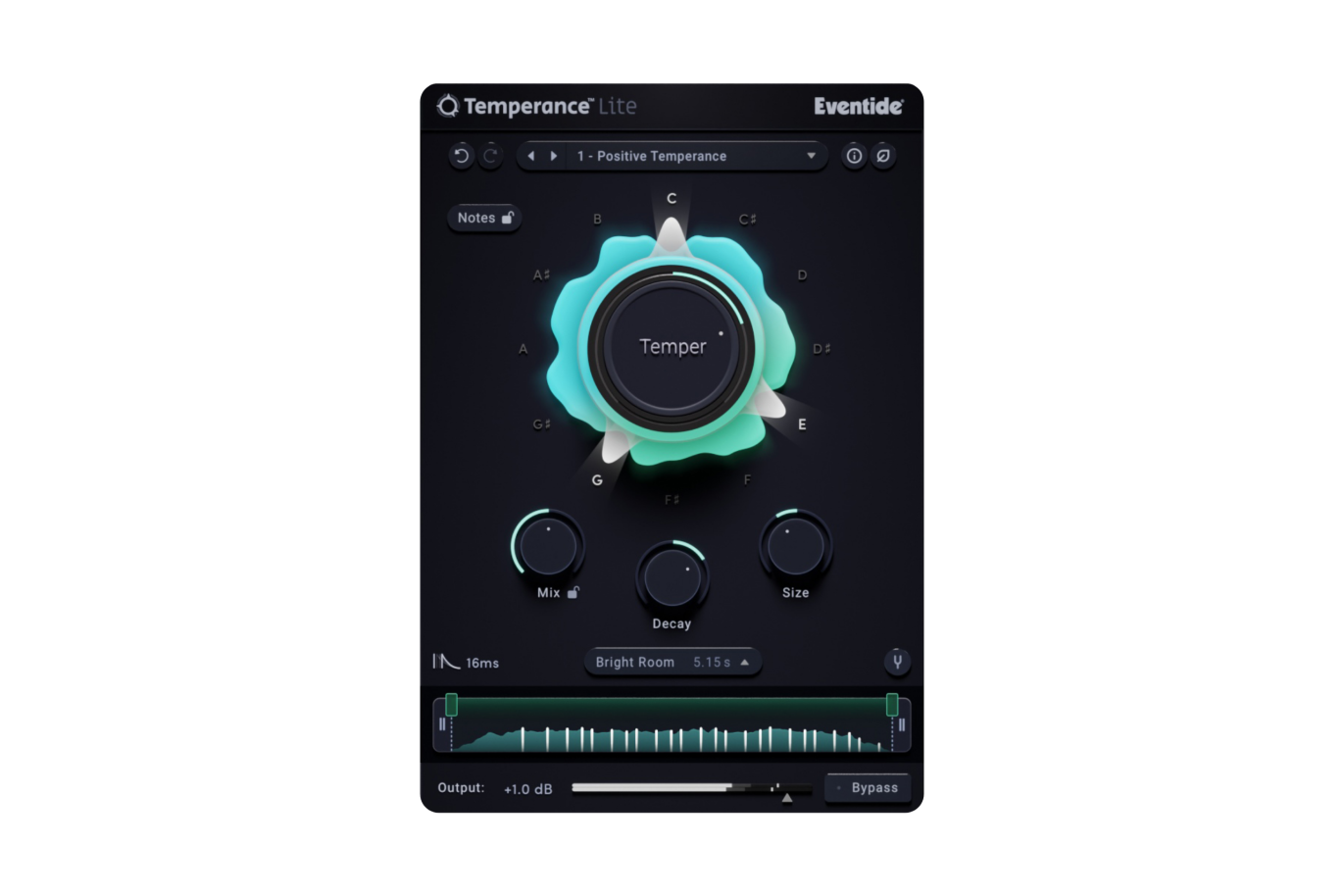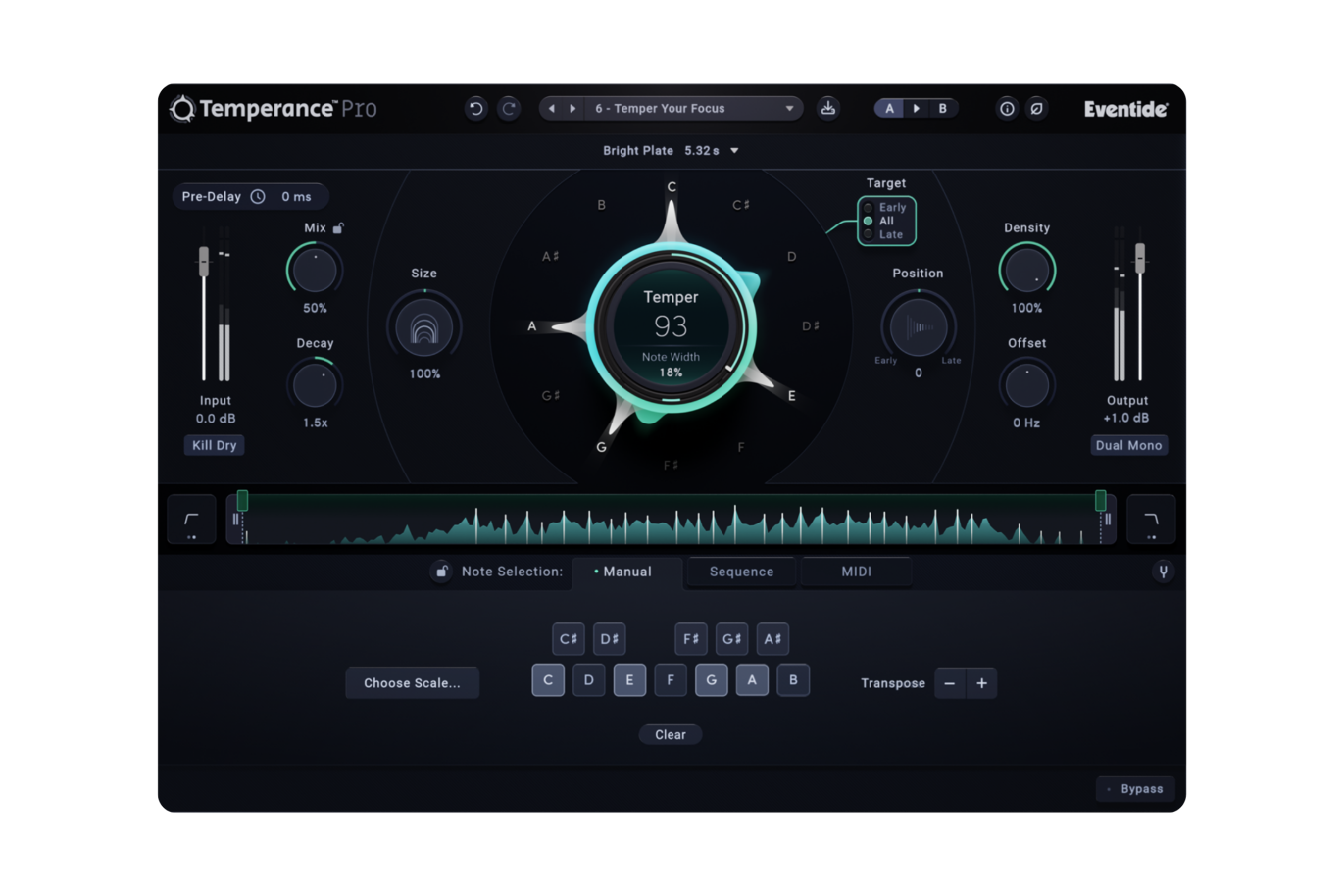
In Part 1 and Part 2, we traced the journey of Temperance from inspiration to implementation, from the moment the idea of “notes in the room” took hold, through the deep engineering and creative effort required to bring it to life.
Now, in Part 3, we open the door to the people who built it and explore how they’re putting it to work. Read firsthand how the Eventide team uses Temperance in real production settings, from crafting ambient fields to solving tricky mix issues, from sculpting expressive instrument treatments to re-thinking traditional reverbs altogether.

The Rhythm Creator
Tom Longabaugh (Bass, Trumpet)
Plug-ins Director
“I really enjoy using Temperance Pro as a ‘rhythm creator’, so to speak. For a given track I’m working on, I’ll send MIDI of my song’s chord progression to Temperance Pro, and then turn Temper to 100, Mix to 100, and Decay to a short value (usually in the 0.2x-0.4x range). I’ll then feed a bunch of different drum loops through Temperance Pro, and cut a lot of the low Range to remove the kick/mud. I’ll then adjust the MR, Decay, Size, Position, and Offset to taste to get a crisp, punchy sound. The result is essentially a synth playing the chords of my song, and provides endless rhythmic inspirations.
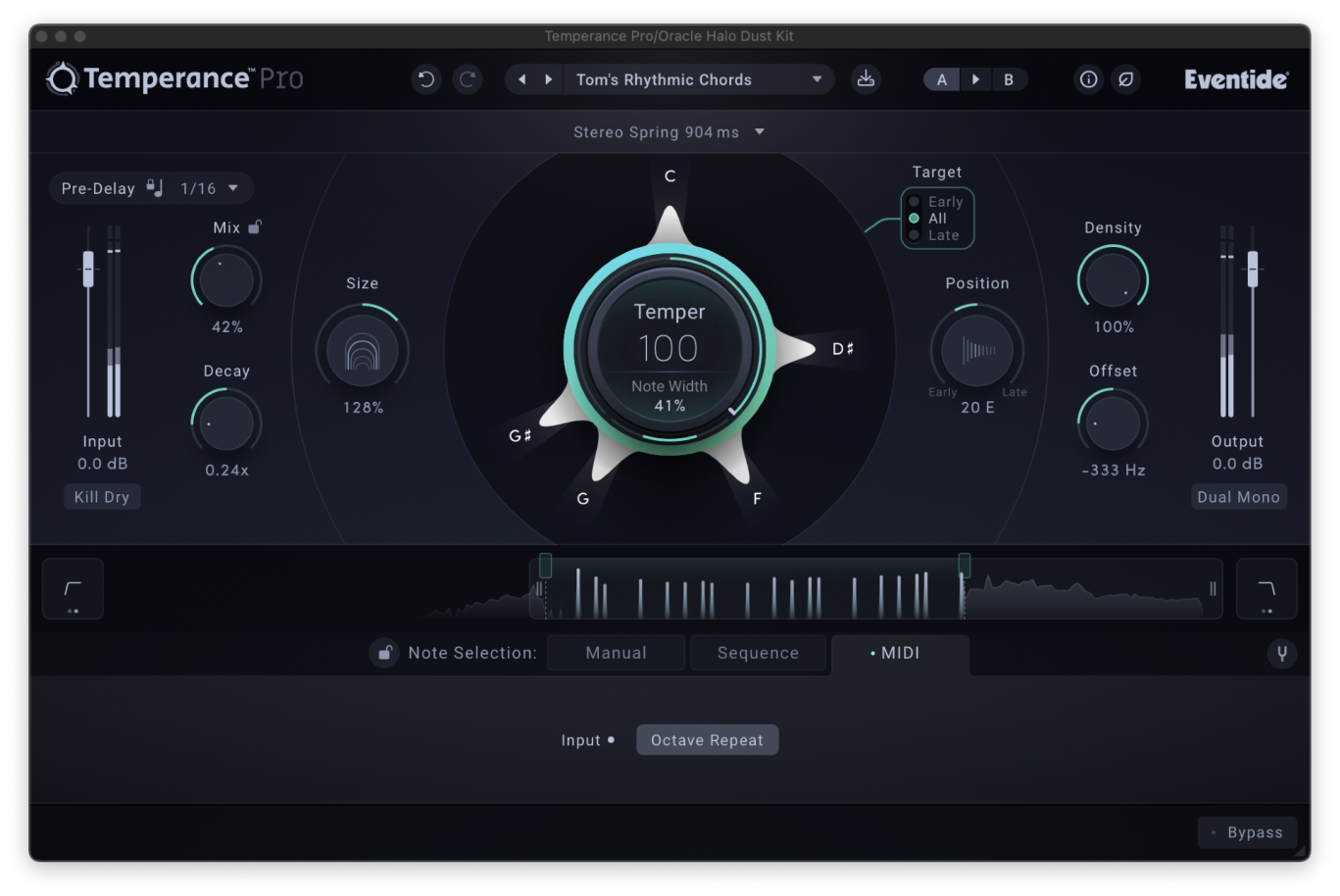
In this example, I’ve automated Range, Decay, Note Width, and Mix, to morph a ‘synth’ into a drum loop. When the other instruments come in, I change Predelay to 1/16 to get a fun ‘bounce’ respective to the drums.”
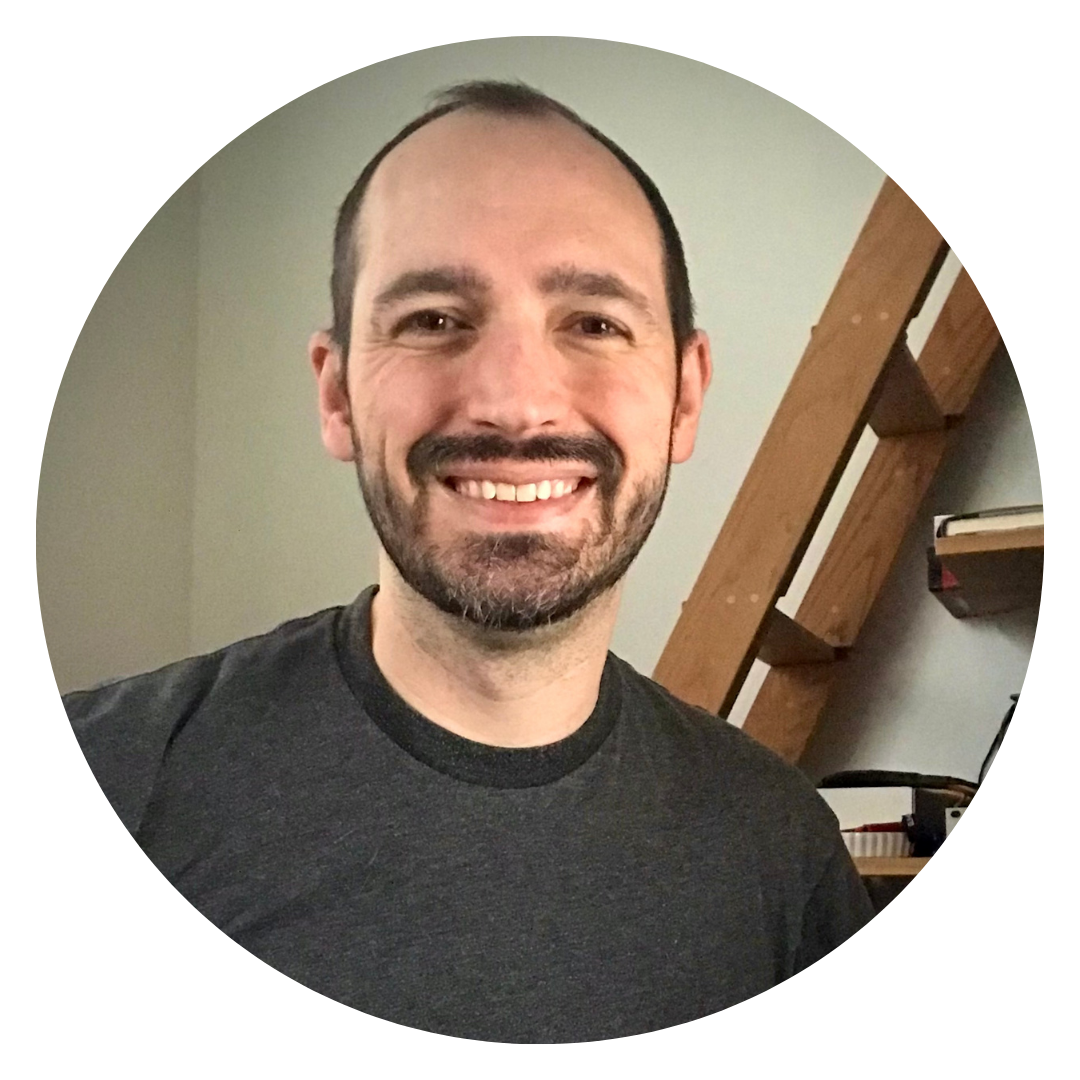
Enhanced Resonance
Peter McCulloch (Piano, Keys, B3)
Plug-in Developer
“As a keyboard player, Temperance Pro allows me to bring out different resonances from the instrument. Hammer sounds, transients, etc., tend to show up as non-harmonic sounds, so if I’m sending the MIDI notes I’m playing to Temperance, I can use the Temper knob to help me alter the timbre. Negative Temper values produce more of the enharmonic parts of the sound, and positive Temper values give me more of the harmonics.
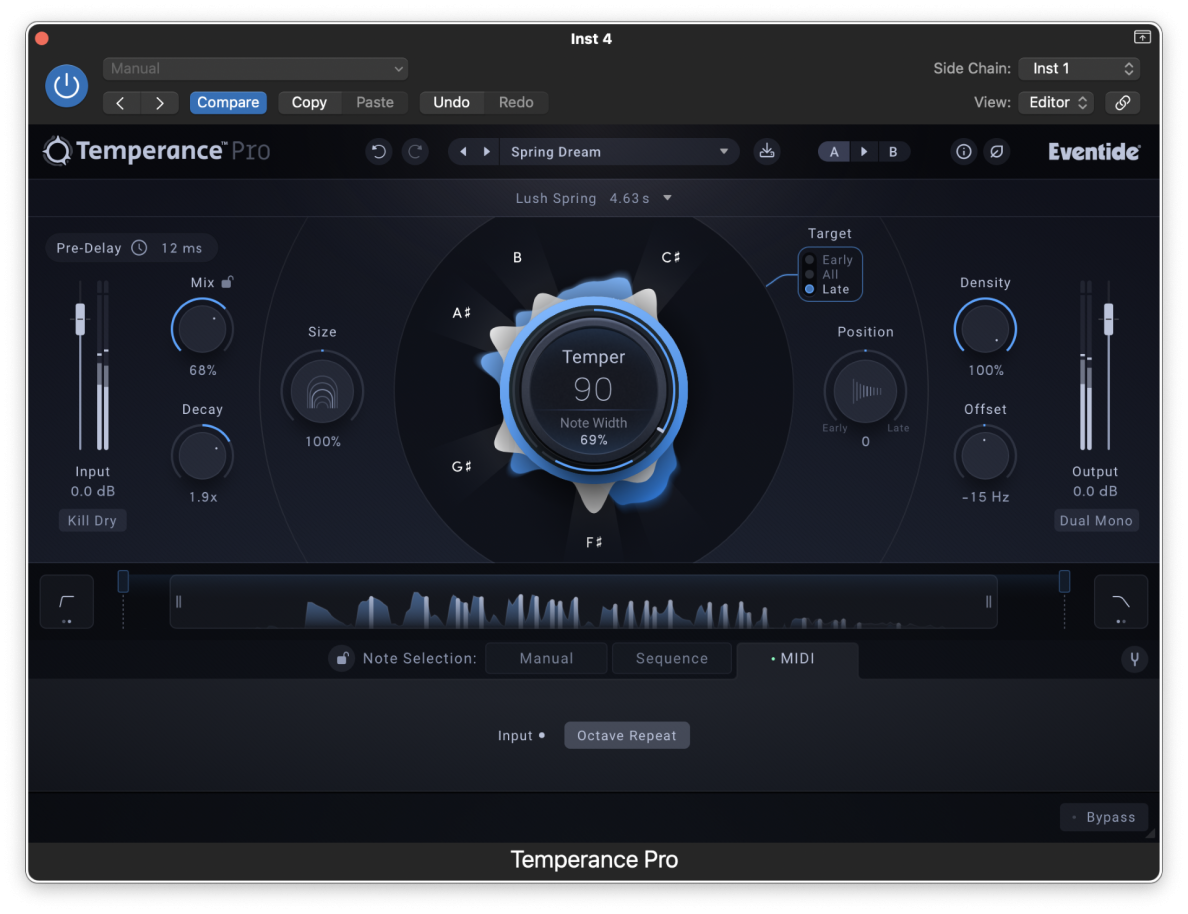
In this example, I’m sending the MIDI notes for the Rhodes to Temperance Pro. I’m using a spring reverb with a slightly longer decay. Initially, I’m using a large negative Temper value so that there’s less resonance on the pitches I’m playing, and then I’m gradually moving towards a large positive Temper value over the course of the phrase to transition to a more resonant, dreamy space. On the last chord, I’m ramping down the Offset knob slightly to produce a pseudo-Doppler effect.”

Cleaner Reverb
Woody Herman (Guitar)
Senior DSP Engineer
“It’s very easy to create amazing special effects with Temperance Pro (like turning your drums into pads) but one of the things I like best about it is that it provides a really easy and creative way to clean up your reverb without sacrificing the sense of space or length of the decay tails. I find it’s a great way to be able to add more reverb without muddying things up or creating annoying resonance build ups. The following examples demonstrate this.

The dry guitar track is a simple garage/indie rock riff where the A string is open while various intervals are played on the D string.
The second example applies the Large Church reverb in Temperance Pro with no Tempering. The size is scaled by 200% and the decay set to twice as long as the original. It’s a pretty nice sound, but the open A can get a little boomy and overwhelm the rest of the sound at times.
We’ve tried to fix this using the Offset knob to shift all the modes up by 80Hz. I find the interplay between the Size and Offset knobs to be a powerful and interesting way to rebalance the resonance in the reverbs. Unfortunately for us, but luckily for the purposes of this demo, we’ve actually made the boominess of that open A string worse. Let’s say we like this setting and don’t want to change offset if only we could bring down the resonance of that A string a bit. Luckily, we’ve got the Temper knob.
The next example uses the exact same settings as the previous, but this time the Temper knob is set to -45 and we’ve selected only that pesky A as our note selection. We haven’t removed that booming resonance entirely (although we could if we pushed Temper even farther in the negative direction) but have managed to wrangle it back to a place that’s more similar to before we changed Offset, all without having to change the size of the reverb or the length of the decays.
These examples shows off some my favorite things about Temperance Pro, and hopefully demonstrates the unique and creative ways it can be used to perfectly fit a reverb to anything you’re putting through it.”

Tonal Metamorphosis
Pete Bischoff (Guitar)
Sound Designer
“I use Temperance Pro in ways spanning a “normal”, sweet sounding reverb to complete tonal metamorphosis of an instrument.
In this 70s inspired synth progression, I’m using one instance of Pro to add some plate ambiance and dimension to the main synth. Pro is setup using a little negative Temper with the Sequencer for a slight unmasking effect following the chord changes. I also added a splash of the drums to the send.

I’ve got another instance of Pro and its Sequencer on the synth line adding the delayed and swelling, melodically blurry after effect. It’s filling the musical spaces with something truly unique and catchy.

On the second pass through the progression, I’ve added a 2nd synth line, sort of call and response idea, but it’s totally transformed by Temperance Pro via MIDI. I love the sounds you can get setting Note Width and Density lower turning the simple saw waves into chimey bells.

You can lose yourself for hours tweaking Size, Offset, and the Range Sliders searching for the perfect bell timbres. Decisions, decisions…”

